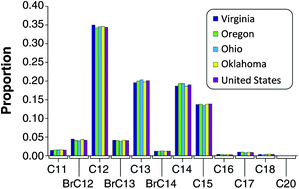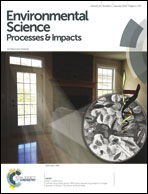Estimating fatty alcohol contributions to the environment from laundry and personal care products using a market forensics approach
Abstract
Fatty alcohol-based surfactants are widely used in detergents and personal care products; they are typically disposed of down-the-drain and are degraded or removed during wastewater treatment. Analytical data had shown concentration and profile differences between regions of the United States. Market sales data were purchased relevant to the sampling dates. In combination with analysis of the fatty alcohol profiles in the top selling products, the influent profiles were reconstructed and compared to the whole U.S. sales data. The per capita usage rate for fatty alcohols through these 4000+ top selling products was 4.9 g per day, with 88% arising from liquid laundry detergents and hand dish detergents. This extrapolates to a national usage of 185 000 tonnes per year. There were significant differences in the purchasing habits of the inhabitants across the four regions sampled, although this had minimal impact on the fatty alcohol profile which was dominated by the C12 moiety. The U.S. market was also dominated by petrochemically-sourced chemicals. This market forensics approach using purchased sales data was able to extend our knowledge of the fate of these chemicals without a major (expensive) sampling and analytical campaign.


 Please wait while we load your content...
Please wait while we load your content...